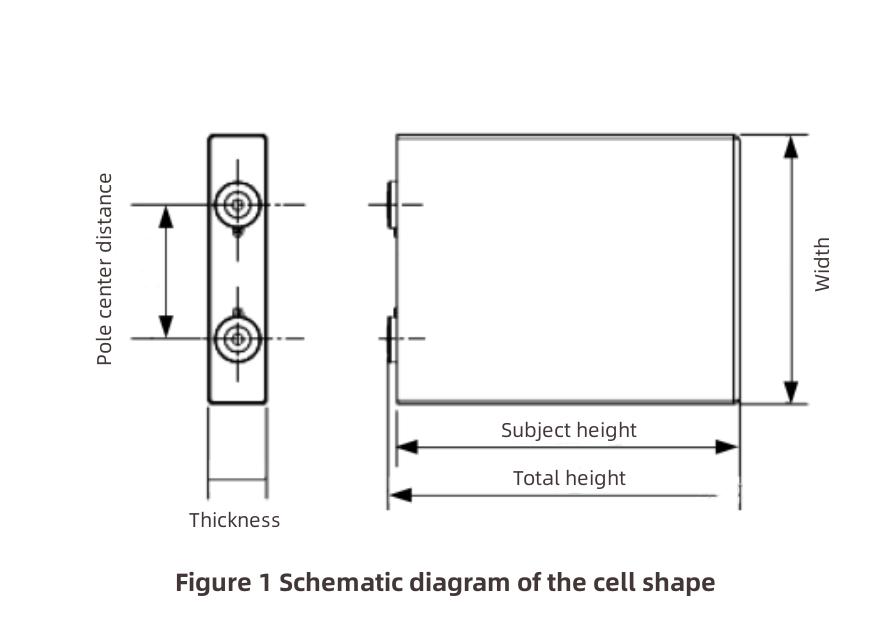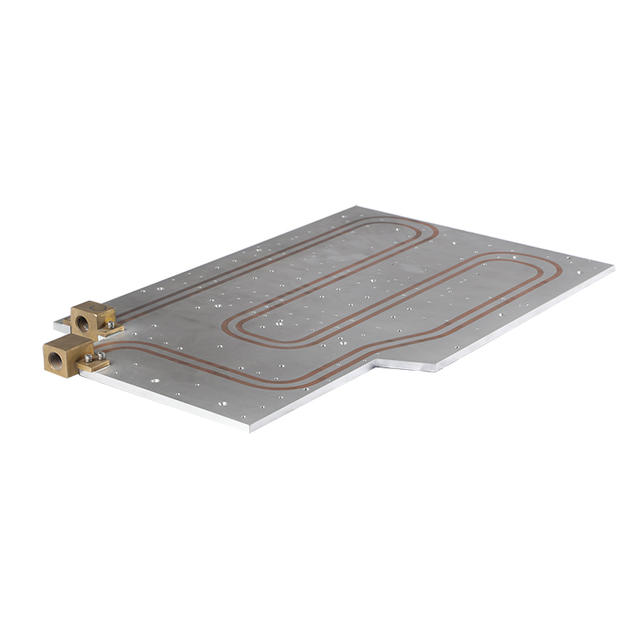Tel: +86-18025912990 | Email: wst01@winsharethermal.com
Blog


Views: 35 Author: Site Editor Publish Time: 2023-05-12 Origin: Site
With the increase in the sales and ownership of new energy vehicles, fire accidents of new energy vehicles also occur from time to time. The design of thermal management system is a bottleneck problem restricting the development of new energy vehicles. Designing a stable and efficient thermal management system is of great significance for improving the safety of new energy vehicles.
Li-ion battery thermal modeling is the basis of Li-ion battery thermal management. Heat transfer characteristic modeling and heat generation characteristic modeling are two important aspects of lithium-ion battery thermal modeling. In existing studies on modeling the heat transfer characteristics of batteries, lithium-ion batteries are considered to have anisotropic thermal conductivity. Therefore, it is of great significance to study the influence of different heat transfer positions and heat transfer surfaces on the heat dissipation and thermal conductivity of lithium-ion batteries for the design of efficient and reliable thermal management systems for lithium-ion batteries.

The 50 A h lithium iron phosphate battery cell was used as the research object, and its heat transfer behavior characteristics were analyzed in detail, and a new thermal management design idea was proposed. The shape of the cell is shown in Figure 1, and the specific size parameters are shown in Table 1. Li-ion battery structure generally includes positive electrode, negative electrode, electrolyte, separator, positive electrode lead, negative electrode lead, center terminal, insulating material, safety valve, positive temperature coefficient (PTC) thermistor and battery case. A separator is sandwiched between the positive and negative pole pieces, and the battery core is formed by winding or the pole group is formed by lamination. Simplify the multi-layer cell structure into a cell material with the same size, and perform equivalent treatment on the thermophysical parameters of the cell, as shown in Figure 2. The battery cell material is assumed to be a cuboid unit with anisotropic thermal conductivity characteristics. It is assumed that the thermal conductivity (λz ) perpendicular to the stacking direction is smaller than the thermal conductivity (λ x , λ y ) parallel to the stacking direction.



The test results of the thermal conductivity of the cell are shown in Table 2. When using this cell for battery pack system integration, the heat dissipation surface of the cell thermal management design includes 5 other outer surfaces except the lug surface. Evaluate and calculate its heat dissipation capacity and determine the heat dissipation path of the battery core when the load is assumed to heat up.

This paper aims to investigate the best way to thermally manage cell-level heat transfer during battery pack integration. Therefore, the 5 cooling surfaces of the cell are divided into 3 groups. There are three different options for bonding the battery cell to the thermal management structure of the system, as shown in Figure 3.

Through the maximum front and back heat transfer of the cell, the heat is transferred from the inside of the cell through the path of λz thermal conductivity to the heat generated by the cell through the surface of the cell. If side heat transfer is selected, the heat from the inside of the cell passes through the path of λ y thermal conductivity, and the heat generated by the cell is transmitted through the surface of the cell. If the bottom surface heat transfer is selected, the heat from the inside of the cell will pass the heat generated by the cell through the surface of the cell through the path of λ x thermal conductivity.
The optimal choice for thermal management design is that the system liquid cooling plate or air duct can touch the surface with the strongest heat dissipation ability of the battery core. At present, the system design mostly designs the position of the liquid cooling plate or the flow direction of the air duct from the perspective of facilitating system integration, ignoring the systematic evaluation of the heat transfer capacity of each surface of the battery cell. Under the assumption that the external environmental parameters are consistent, different cell surfaces are selected as heat dissipation surfaces (selection of different thermal conductivity, heat dissipation area and heat dissipation path). The key parameters of the heat dissipation surface are shown in Figure 4, and the heat dissipation path of the cell is shown in Figure 5.


Based on the above analysis, when the temperature gradient ΔT in the transmission direction is 1 K, the heat flow of each cooling surface of the battery is calculated.
When ΔT is 1 K, the heat flow is 3.39 W if A1 and A2 are the main cooling surfaces. If A3 and A4 are the main cooling surfaces, the heat flow is 4.68 W. If A5 is used as the main cooling surface, the heat flux is 0.78 W. Therefore, the side of the battery (A3, A4) is the best location and the bottom of the battery (A5) is the worst location in terms of heat flow.
The charging and discharging of the cell at 1 C is taken as the research condition, and the charging or discharging time is 3600 s. The internal heat generation rate of the cell is 6.4 W. The total mass of the cell and the aluminum case is 1.43 kg. When it is considered as a whole, the specific heat capacity is 1026.3 J/(kg·K).
Assuming that the ambient temperature is 295 K and the battery core does not dissipate heat to the surrounding environment, the temperature rise of the battery core is 15.7 K. When the cell is completed in working condition, the temperature of the cell is 310.7 K.
According to the above material properties and heat generation process, the simulation boundary conditions are set, and the finite element analysis (FEA) simulation results of the temperature rise of the battery core are shown in Figure 6. The comparison between the calculation results and the FEA simulation results is shown in Fig. 7. It can be seen from Figure 6 and Figure 7 that the temperature field distribution of the battery core is 310.72-310.95 K, which is consistent with the calculation results, which proves that the mathematical modeling of the battery FEA is accurate and reliable. The FEA results can effectively verify the heat transfer behavior of the cell.


Considering the module integration method of square lithium-ion batteries, the existing thermal management contact surface selection design of the module structure includes the heat transfer scheme of the bottom surface of the battery (A5) and the heat transfer scheme of the side of the battery (A3+A4). Schematic design of battery front and back (A1+A2). Under the same external environment and battery heat generation rate load, this paper assumes the same thermal conductivity, choose the battery bottom heat transfer scheme or the battery side heat transfer scheme, and compare the temperature difference and temperature rise results of the battery cells.
Numerical calculation software is used to calculate the parameters of the same heat source on different heat dissipation surfaces of square lithium-ion batteries to verify the heat dissipation effect of the heat transfer scheme on the bottom surface of the battery and the heat transfer scheme on the side of the battery. The ambient temperature is 295 K, the heat generation rate of the cell is 6.4 W, and other physical parameters are the same as in the previous chapter. Assuming that the heat transfer scheme on the bottom of the battery and the heat transfer scheme on the side of the battery maintain the same thermal conductivity of the heat dissipation surface, that is, the same external heat conduction scheme and the same interface heat conduction treatment are adopted.

Comparing the numerical calculation results of the two schemes, it can be concluded that:
(1) Select the side of the battery as the heat dissipation surface of the battery cell, and the maximum temperature rise and maximum temperature difference of the battery cell can be improved.
(2) Comparing the slope at the end of the temperature rise curve, it can be seen that the temperature rise curve of the heat transfer scheme on the bottom of the battery will continue to increase as the operating time increases, and the maximum temperature of the battery cell will continue to increase (such as charge and discharge cycles). However, the end of the temperature rise curve of the battery side heat transfer scheme is close to equilibrium, that is, the temperature rise and temperature difference do not change significantly as the working time increases.
To sum up, when selecting the thermal management and heat dissipation position of the battery cell, the heat transfer scheme on the side of the battery is better than the heat transfer scheme on the bottom surface of the battery.

Through numerical simulation and formula calculation, it is verified that when designing the thermal management of lithium-ion batteries, it is necessary to evaluate the heat dissipation capacity of the heat dissipation position of the thermal management to determine the best heat dissipation surface. It is necessary to further determine the key parameters that affect the heat dissipation capability, such as battery size, heat generation rate, heat dissipation flow, and heat conduction path distance. Analysis of heat transfer behavior and heat transfer characteristics from the cell level can effectively solve the problem of inaccurate and detailed system-level thermal management design caused by ignoring the heat transfer capability of the battery cell and emphasizing the system integration process during the thermal management of the current battery packaging system. It provides new ideas and methods for efficient battery packaging thermal management systems.